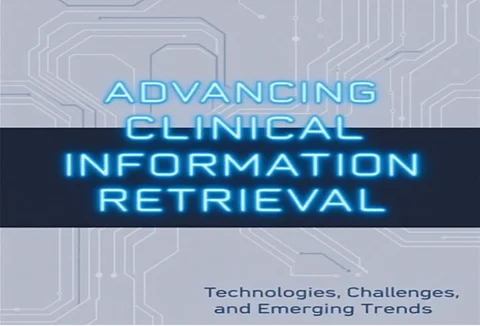

In the current era, Indraneel Borgohain, a researcher in clinical informatics and data systems, brings forward a compelling narrative on how clinical information retrieval (CIR) is revolutionizing the healthcare landscape. With the ever-increasing volume and complexity of medical data, his work highlights how technology is enabling smarter, faster, and more meaningful data access for healthcare professionals.
At the core of every advanced clinical retrieval system lies a robust architectural design. These systems rely on meticulously engineered components such as specialized data indexing, sophisticated query processing engines, and temporal relevance ranking algorithms. Together, they ensure swift and contextually accurate data access. A striking highlight is the integration of inverted indices tailored for medical terminology, which reduces latency nearly fourfold compared to general-purpose indexing. Additionally, user interfaces, custom-designed for clinical workflows, improve query response times and usability, enhancing physicians' efficiency.
Clinical information is multifaceted, spanning structured lab values, unstructured clinical notes, imaging metadata, and external knowledge repositories. Advanced retrieval systems synthesize these disparate sources into coherent outputs. By integrating temporal data modeling and structured terminologies, systems achieve remarkable interoperability such as 83.7% retrieval consistency using standardized lab codes. Natural language processing (NLP) algorithms further bridge the gap by extracting vital concepts from complex clinical notes, capturing insights that structured fields might miss.
Modern CIR systems lean heavily on NLP to decode the complex semantics of clinical documentation. Named Entity Recognition and relation extraction techniques can identify diseases and medications with up to 91% accuracy. These systems also detect negations differentiating "has asthma" from "no asthma" to prevent erroneous interpretations. Recent NLP models now combine several capabilities into integrated frameworks that perform context-aware and temporally nuanced analysis, boosting overall information extraction performance by as much as 35%.
A combination of machine learning (ML) and artificial intelligence (AI) has been reconfiguring the clinical data classification, diagnostic support, and decision-making. Supervised ML models achieve the highest-ever classification accuracy for diseases, while deep learning processing of text aids in better understanding the subtleties of clinical language. Reinforcement learning models improve through user interaction, thereby improving precision. Most notably, multimodal approaches combining text and structured data provide better diagnostic insights, establishing the importance of integrated views for clinical contexts.
LSI is an information retrieval technique that analyzes relationships between documents and terms to identify underlying (latent) semantic structures. When applied to clinical systems dealing with multiple modalities of data, LSI helps bridge gaps between different types of information. In clinical settings, modality gaps refer to the challenges in integrating and analyzing different forms of healthcare data
Text (clinical notes, reports)
Images
Structured data (lab results, vital signs)
Time-series data (ECG readings)
LSI helps bridge these gaps by finding semantic relationships across these different modalities, allowing for more comprehensive analysis and better clinical decision support
Latent Semantic Indexing (LSI) introduces a novel methodology for interpreting multimodal clinical inputs. By transforming textual and image-based data into shared latent concept spaces, LSI facilitates semantic similarity-based retrieval, enabling deeper alignment between physician queries and patient outcomes. This approach enhances the interpretability of complex medical information, bridging the gap between diverse data modalities..
Despite much advancement, CIR systems remain with tremendous hurdles. The language of medicine is intrinsically complex, laden with multiple synonyms, abbreviations, and domain-specific jargon. This linguistic fragmentation can cost retrieval recall up to 17%. Privacy is a prime concern; one should never introduce an HIPAA-compliant feature that bears a performance trade-off or access control restrictions. Interoperability issues among legacy systems and disparate data standards affect information completeness and accuracy, with the average time for retrieval of an object being greater than a clinician would expect to wait.
Emerging semantic technologies are poised to elevate Clinical Information Retrieval (CIR) to unprecedented levels of performance and utility. Ontology-based models and knowledge graph-enhanced retrieval systems are dramatically improving precision and contextual relevance, particularly in high-stakes environments like intensive care units and complex clinical question-answering scenarios. Another exciting frontier is personalization, where intelligent systems dynamically adapt to individual user roles, preferences, and clinical workflows delivering highly relevant, context-aware information. Furthermore, the integration of distributed and edge computing architectures is minimizing latency, enhancing real-time responsiveness, and expanding system accessibility, all while maintaining robust data security and cost-efficiency. These innovations collectively lay a strong foundation for scalable, intelligent, and adaptive CIR ecosystems capable of meeting future healthcare demands.
In conclusion, in the process of maturation of the CIR technologies, they are expected to be the nervous system of digital healthcare interpreting, connecting, and responding to information needs with insane precision. The insights from Indraneel Borgohain portray how truly transformative these technologies are and highlight the necessity for a continued interdisciplinary effort. By overcoming the present challenges while embracing new technologies, retrieval of clinical information could truly be the cornerstones of enabling intelligent, precise, and truly effective patient care.
